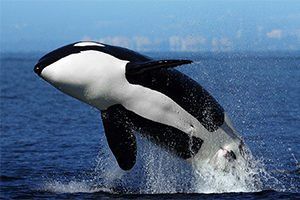
Forest frogs: Science primary resource
Discover why these amphibians are under threat from a fungus
This primary resource introduces children to different species of endangered frog found in the forests of Panama. Discover why these amphibians are under threat in their forest environment. What are the frogs’ favourite hangouts? What impact was the fungus having on the frogs? What do the frogs eat?
Pupils will learn about the El Valle Amphibian Conservation Center, and the work it is doing to help bring these frogs back from the brink of extinction, in our National Geographic Kids’ Science primary resource sheet.
The teaching resource can be used in study group tasks for discussion about how environmental changes can drastically affect wild populations. It could be used as a printed handout for each pupil to review and annotate, or for display on the interactive whiteboard, using the images included in the resource for class discussion.
Activity: Ask children to discuss, as a class, what would happen to the ecosystem in the forests of Panama if the frogs had been wiped out? How would this affect the food chain? This could open up discussion about the life cycle of a frog, by looking at how the fungus in the water affects frogspawn, tadpoles and growing frogs. Children could use the resource sheet to help them draw pictures of frogs, and colour in patterns and markings on their drawings, depending on which type of frog they have chosen to draw. Pupils could use the frog images within the article as a starting point for their own research into each of the species. They could cut around the photos and use their research to create fact cards about each type of frog mentioned.
N.B. The following information for mapping the resource documents to the school curriculum is specifically tailored to the English National Curriculum and Scottish Curriculum for Excellence. We are currently working to bring specifically tailored curriculum resource links for our other territories; including South Africa, Australia and New Zealand. If you have any queries about our upcoming curriculum resource links, please email: schools@ngkids.co.uk
This Animals primary resource assists with teaching the following Key Stage 1 Science (Year 1) objectives from the National Curriculum:
Pupils should be taught to:
- identify and name a variety of common animals including fish, amphibians, reptiles, birds and mammals
- identify and name a variety of common animals that are carnivores, herbivores and omnivores
- describe and compare the structure of a variety of common animals (fish, amphibians, reptiles, birds and mammals, including pets)
National Curriculum Key Stage 1 Science (Year 2) objective:
Pupils should be taught to:
- identify that most living things live in habitats to which they are suited and describe how different habitats provide for the basic needs of different kinds of animals and plants, and how they depend on each other
- identify and name a variety of plants and animals in their habitats, including micro- habitats
- find out about and describe the basic needs of animals, including humans, for survival (water, food and air)
National Curriculum Lower Key Stage 2 Science (Year 3) objective:
Pupils should be taught to:
- identify that animals, including humans, need the right types and amount of nutrition, and that they cannot make their own food; they get nutrition from what they eat
National Curriculum Lower Key Stage 2 Science (Year 4) objectives:
Pupils should be taught to:
- recognise that living things can be grouped in a variety of ways
- recognise that environments can change and that this can sometimes pose dangers to living things.
National Curriculum Upper Key Stage 2 Science (Year 5) objective:
Pupils should be taught to: describe the differences in the life cycles of a mammal, an amphibian, an insect and a bird
This Science primary resource assists with teaching the following Sciences Early level objectives from the Scottish Curriculum for Excellence:
- I have observed living things in the environment over time and am becoming aware of how they depend on each other
Scottish Curriculum for Excellence Second level Sciences objectives:
- I can identify and classify examples of living things, past and present, to help me appreciate their diversity. I can relate physical and behavioural characteristics to their survival or extinction.
- I can use my knowledge of the interactions and energy flow between plants and animals in ecosystems, food chains and webs. I have contributed to the design or conservation of a wildlife area.
Scottish Curriculum for Excellence Sciences Third level objectives:
- I can sample and identify living things from different habitats to compare their biodiversity and can suggest reasons for their distribution.
Scottish Curriculum for Excellence Sciences Fourth level objectives:
- I understand how animal and plant species depend on each other and how living things are adapted for survival. I can predict the impact of population growth and natural hazards on biodiversity.
Download primary resource
More Like

Weird But TRUE! 2025 Annual

Facts about the Moon!

Killer whale facts!









LEAVE A COMMENT
THANK YOU
Your comment will be checked and approved shortly.
WELL DONE,
YOUR COMMENT
HAS BEEN ADDED!
COMMENTS
Hello
CUSTOMIZE YOUR AVATAR